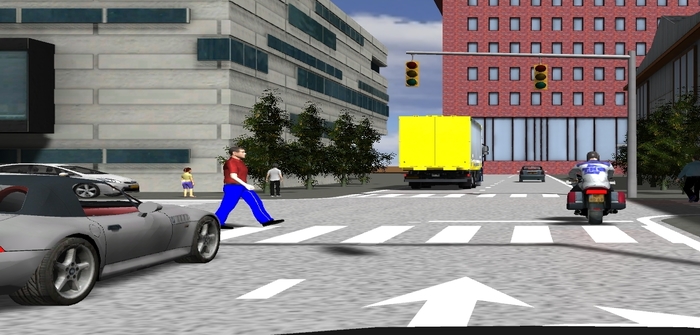Hyundai Mobis is utilizing high-definition software originally developed for 3D game development to conduct a series of autonomous driving tests for various scenarios, to enhance the performance of its autonomous driving sensor (camera).
As a result, the biggest automotive supplier in Korea expects to greatly improve the object recognition accuracy of the cameras it is proprietarily developing for autonomous vehicles.
“As it is possible to create the desired environment for testing without being limited by numerous constraints in real life, the performance of the cameras can be enhanced,” explained a company spokesperson.
The company’s technical centre in India recently entered into a contract with Tata Elxsi, an Indian software company that provides solutions optimised for ICT sectors, such as artificial intelligence, Internet of Things, big data and autonomous driving.
In 2007, Hyundai Mobis opened a research centre in Hyderabad, which is often referred to as India’s equivalent to Silicon Valley. The centre has hired a large number of local researchers, specialising in development and verification of software for DAS (driver assistance system), autonomous driving systems and multimedia.
“We are planning to finish developing the mock autonomous driving imaging technology by the end of this year,” said Yang Seung-wook, head of Hyundai Mobis ICT Research Center.
“We will proactively make the most of top-notch tech companies both at home and abroad in various fields, including artificial intelligence, to develop core future car technologies that will enable us to get ahead of the global competition.”
Hyundai Mobis will fully leverage the technology to drastically enhance the performance of the cameras used in autonomous driving cars. The recognition accuracy of the camera, the core sensor, is essential to safe autonomous driving, and leading global companies are now competing for it.
The virtual driving environment, which Hyundai Mobis is seeking to introduce to autonomous driving testing, is made by using the imaging software for developing 3D games.
If high-definition 3D images are used, it is possible to make various driving scenarios, such as night roads on a rainy day, congested downtown area, puddles, and road construction sites, claims the company.
“If the cameras for autonomous driving cars are tested in these various virtual environments, the recognition performance can be improved so that it is possible to correctly classify a wide range of objects including vehicles, pedestrians, traffic light infrastructure and road markings under any harsh condition,” said a company spokesperson.
In addition to testing autonomous driving test vehicles all around the world and collecting information on various climate, unusual terrain and road conditions, the company will be able to use mock environments similar to those used in computer games to verify the performance of sensors in the desired manner anytime and anywhere, gaining the upper hand on the competition.
Hyundai Mobis is also striving to develop the technology for automatically classifying driving images based on deep learning technology, an area of artificial intelligence, by the first half of next year. The purpose is, again, to drastically improve the recognition performance of the cameras for autonomous driving vehicles.
The front-view camera, installed in autonomous driving cars, captures a myriad of objects, such as vehicles, lanes, pedestrians and traffic lights, in place of human eyes. To correctly read the images, a great deal of information is necessary. The more data that is secured, the more will be learned, and the recognition accuracy of the sensor will be improved.
Amid this learning data, the image itself is important, but labelling, i.e. assigning a name to each piece of data, is also important. To make the camera learn, it is necessary to specify the type of each captured image, for example, a vehicle, a pedestrian or a traffic sign.
“In general, around 1,000 people are allocated and they manually label each of the images called in by the sensors,” said director Lee Jin-eon, head of the Autonomous Driving Advanced Development Department of Hyundai Mobis. “Hyundai Mobis is aiming to take advantage of the deep learning-based computing technology to improve its efficiency, including accuracy and speed.”
A million images are required for each object so that the cameras for autonomous driving vehicles can correctly recognize them Hyundai Mobis has selected a total of 18 classification categories on its own (vehicles, pedestrian, lanes, road conditions, etc), and the company is now developing technology for automatically labelling an average of 18 million driving images for each country.
The quantity and quality of this database will determine the recognition accuracy of sensors, while the deep learning-based automation technology will help drastically improve results.
Meanwhile, Hyundai Mobis is planning to increase the size of the autonomous R&D workforce from the current level of about 600, to more than 1,000 by 2021. The company will focus its energy on developing core future car technologies, such as increasing the number of software designers in its domestic technical centre, from the current 800 or so, to 4,000 by 2025.
By Illya Verpraet


